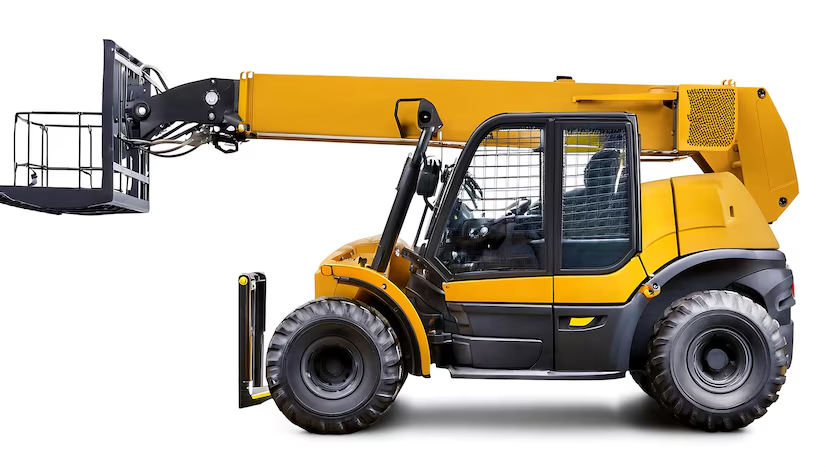Telehandlers have become indispensable in the concrete industry, offering versatility, efficiency, and increased safety on construction sites. Their
Telehandlers have become indispensable in the concrete industry, offering versatility, efficiency, and increased safety on construction sites. Their unique design, featuring an extendable boom and the ability to lift and move heavy materials to various heights and across challenging gaps, makes them ideal for tasks that require precise handling of concrete products and materials. Construction companies across the world, including South Africa, have integrated telehandlers into their fleets, recognizing their importance in handling materials such as gunite, precast concrete, pipes, hollow-core slabs, lintels, and in-situ concrete.
Telehandlers, also known as telescopic handlers, combine the features of a forklift, crane, and boom lift, providing construction companies with a flexible solution for material handling. Equipped with a telescoping boom, they can lift and place heavy materials at different heights and distances. South African construction firms such as WBHO and Concor, as well as international manufacturers like CAT, Gehl, and Manitou, highlight telehandlers as essential equipment for modern construction projects.
One of the significant uses of telehandlers in the concrete industry is for placing gunite (or shotcrete), a method of applying concrete pneumatically. The extendable boom of a telehandler allows operators to position the gunite nozzle at precise angles and heights, facilitating the even application of concrete on surfaces such as walls, foundations, and tunnels. This is particularly important in projects requiring intricate detailing, such as swimming pools, retaining walls, and underground structures.
Telehandlers also simplify the handling of precast concrete elements. Precast concrete is manufactured off-site and delivered to construction locations for installation. Telehandlers can be fitted with specialized attachments to lift and transport these heavy panels, slabs, and beams, placing them accurately into position. With their superior reach and manoeuvrability, telehandlers allow construction teams to place precast elements even in confined or hard-to-access areas, increasing project efficiency.
In construction projects requiring the installation of large concrete pipes, hollow-core slabs, and lintels, telehandlers play a crucial role. These materials are often too heavy or awkward to be moved manually or by smaller equipment. With lifting capacities exceeding 5,000 kg in some models, such as those offered by CAT and Manitou, telehandlers easily handle these loads.
For example, when installing hollow-core slabs, which are commonly used in the construction of multi-story buildings and parking decks, a telehandler with an extendable boom can lift the slab from a flatbed truck and position it at the necessary height with precision. Similarly, telehandlers can assist in placing lintels and beams that support structural loads above doorways and windows, improving construction speed and safety.
Telehandlers are equally valuable in in-situ (cast-in-place) concrete projects. In-situ concrete requires careful placement into formwork, and the extendable boom on a telehandler can help deliver concrete to hard-to-reach areas. This reduces the need for additional equipment like cranes or mobile pumps, saving time and lowering costs. Telehandlers also offer the advantage of being able to place concrete directly from the mixer into the form, minimizing the need for manual labour.
The extendable boom on a telehandler offers significant advantages for the concrete industry. Unlike traditional forklifts or other material-handling machines, telehandlers can reach heights of up to 18 meters (in models like those from Gehl), making them ideal for projects involving tall structures. Their ability to extend horizontally also allows for work to be done across gaps, such as placing materials on the opposite side of an excavation or through narrow openings.
This flexibility is particularly important when working in tight or complex job sites, where traditional cranes or forklifts may not be able to manoeuvre. The compact nature of telehandlers means they can operate in restricted areas, allowing construction teams to overcome obstacles without sacrificing productivity.
Why Building Contractors Should Invest in Telehandlers
For building contractors, telehandlers represent a significant return on investment. Their versatility means they can perform a wide range of tasks, reducing the need for multiple machines on-site. With the ability to change attachments, such as buckets, pallet forks, and lifting hooks, telehandlers can adapt to the varying demands of concrete handling and installation. This adaptability not only improves operational efficiency but also reduces the cost associated with hiring or maintaining separate pieces of equipment.
Manufacturers such as CAT, Manitou and Gehl offer telehandlers with robust designs, high lifting capacities, and enhanced safety features. For contractors working in challenging environments, these machines provide the durability and performance needed to meet the demands of modern construction projects. Additionally, many telehandler models come equipped with advanced safety technologies, including load management systems and operator-friendly controls, further enhancing their appeal.
South African construction companies, facing increasing pressure to complete projects on time and within budget, are turning to telehandlers as a cost-effective solution for material handling. The ability to complete tasks such as placing gunite, precast elements, and hollow-core slabs with greater speed and precision makes telehandlers a must-have piece of equipment for contractors in the concrete industry.


COMMENTS